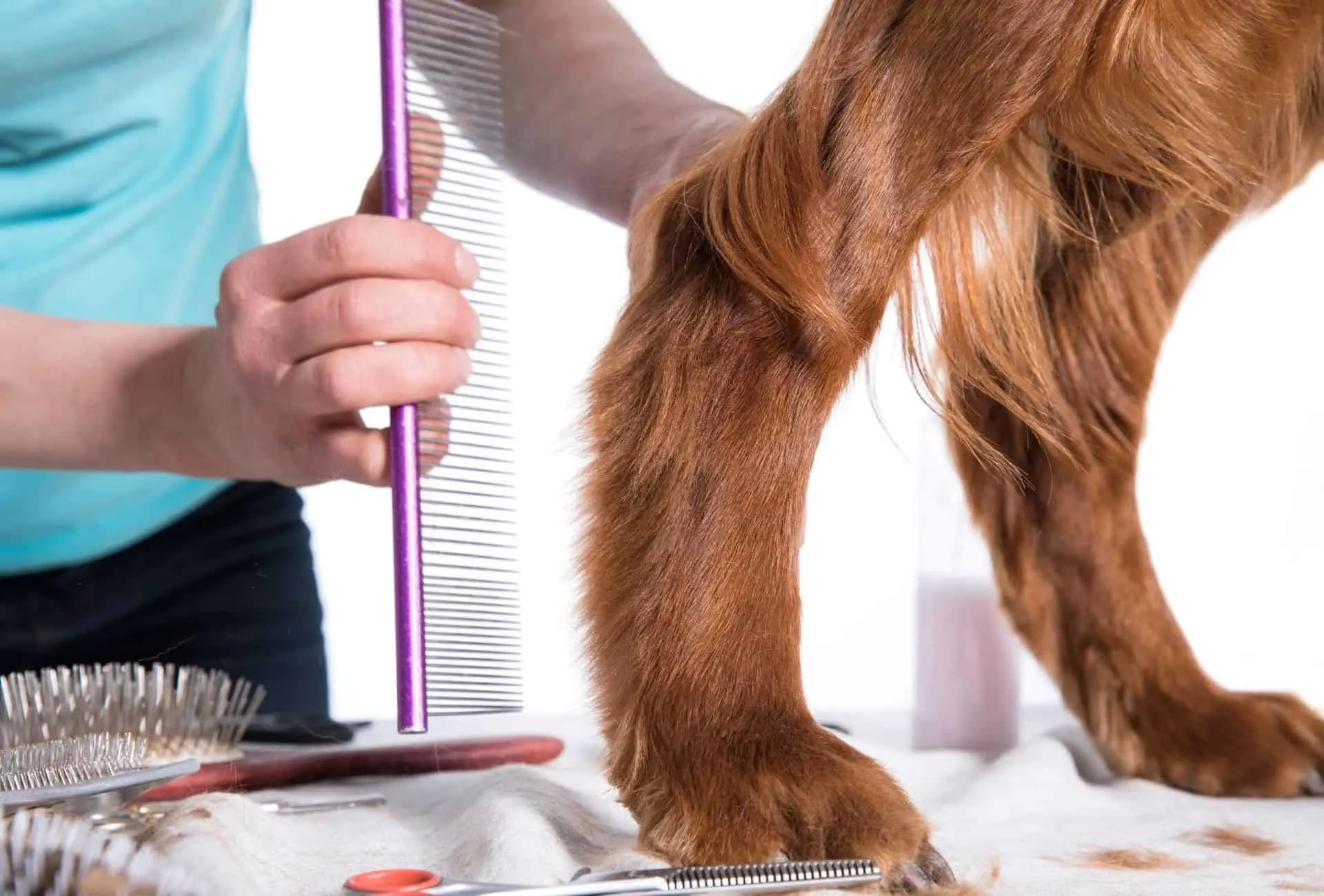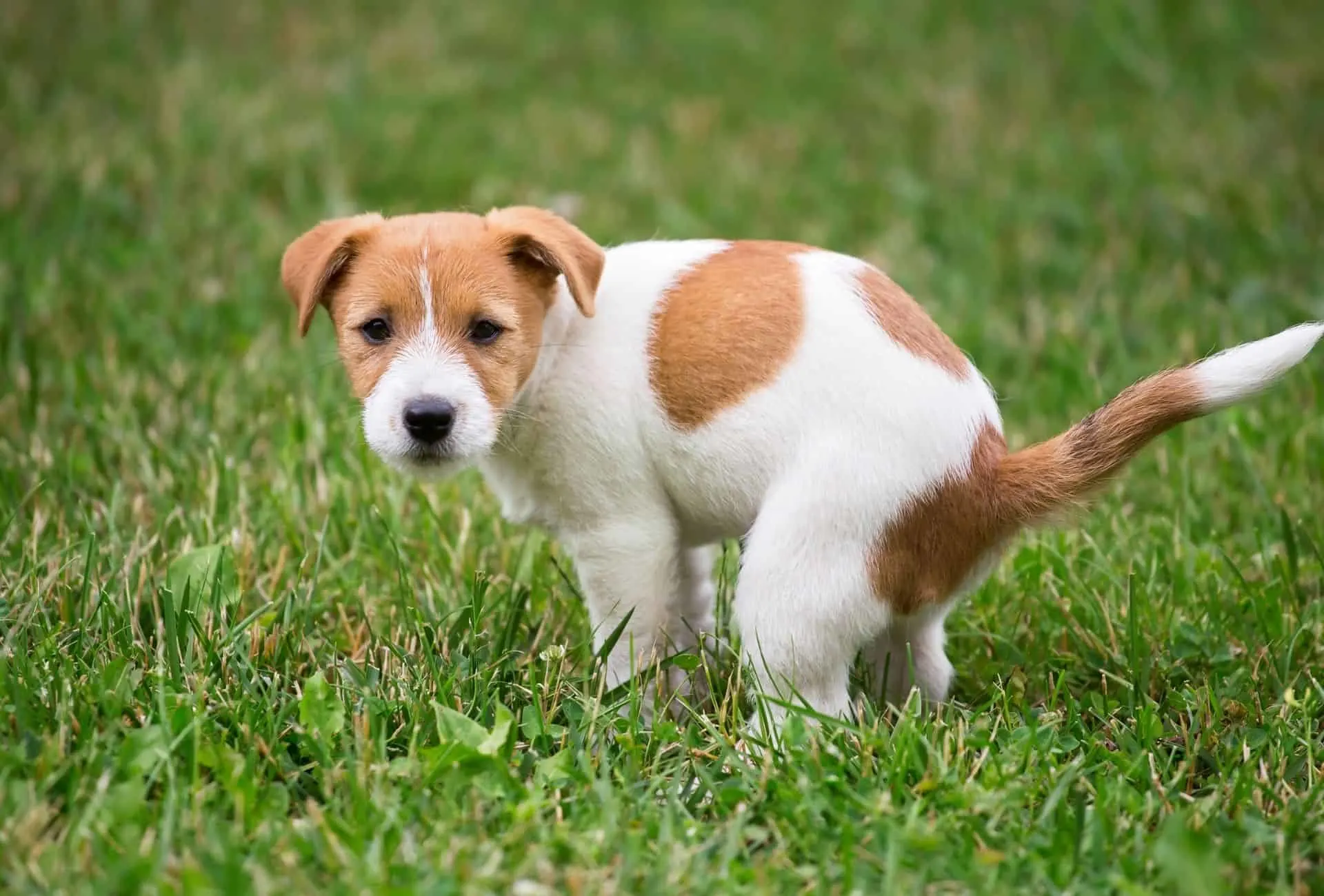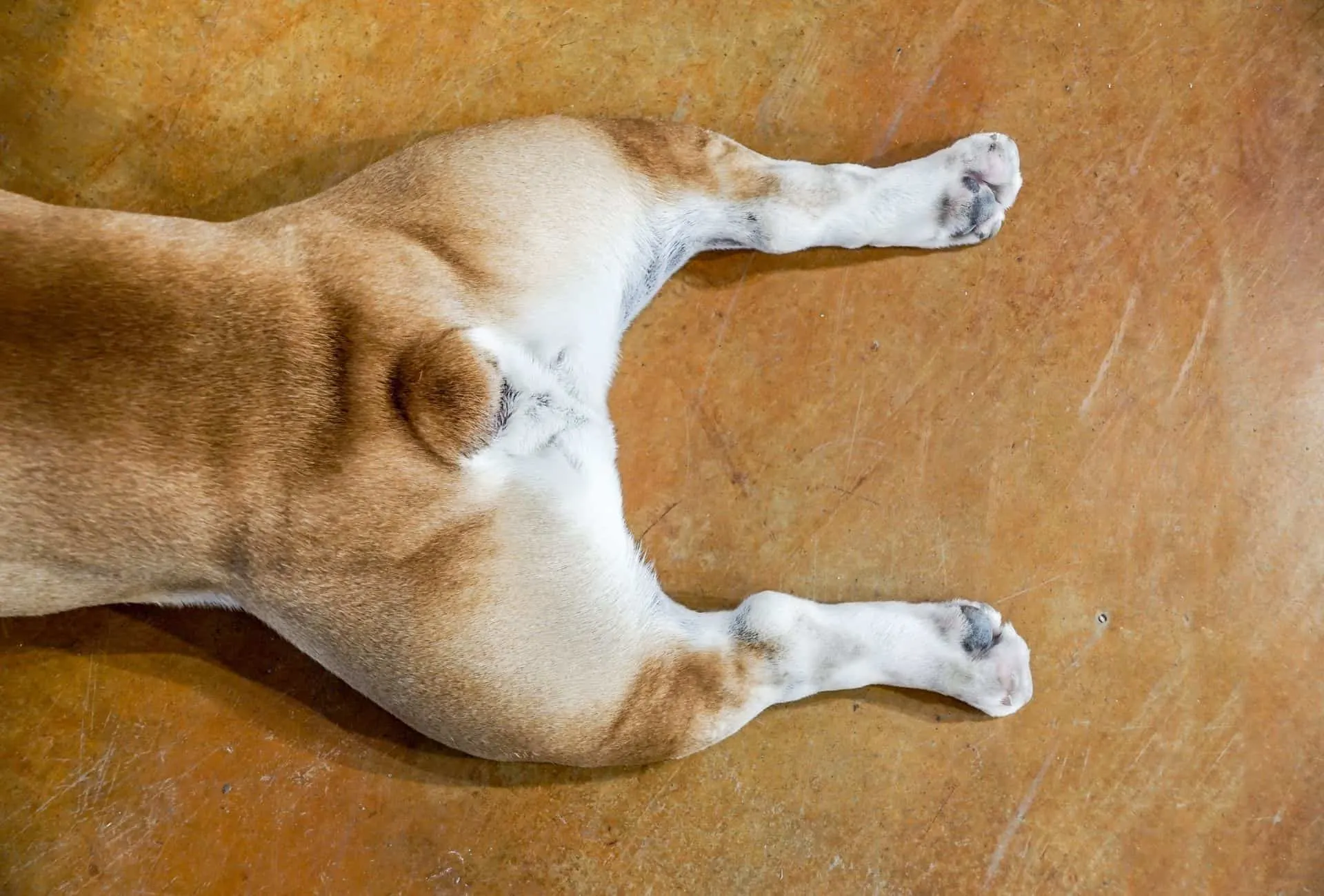Itchiness and a red or swollen bottom are probably more common among dogs than you might think.
It’s a really uncomfortable situation for dogs and they tend to lick and bite their rear end constantly.
Infrequent itching and licking of the area shouldn’t be a cause for concern.
Repeated bouts of a rectal itch that last for longer periods of time, on the other hand, need to be investigated and treated appropriately.
The obsessive licking is just the start; the situation becomes even more unusual when you notice the dog scooting his behind across the floor.
Such behavior can be noticed both indoors and outdoors.
Depending on the cause of the itchiness, there are some natural remedies that can easily alleviate your dog’s symptoms.
Cases that require a change of diet or lifestyle require a more persistent regimen and can take days or weeks until the situation turns for the better, but you’ll get there.
Serious cases should always be checked out by your vet, especially if it’s about medical issues such as an infected or ruptured abscess. At-home treatment is supplementary and should be discussed with your vet.
Why Is My Dog’s Rear End Swollen?
There are numerous reasons why your dog’s anal area is swollen, red, and itchy and among them are overgrown hair, grooming, fecal contamination, diarrhea, allergies, flea infestations, worms, and breed predisposition.
In rare cases, a tumor can be behind the swollen bottom, but no reason to panic.
Try to find the cause and get it checked out by your vet if you’re unsure.
The symptoms are definitely signaling a medical issue with the pup.
However, sometimes the problem can be dealt with at home after your vet has ruled out serious issues.
Rear end issues are commonly caused by your dog’s diet (soft stool, constipation, anal sac issues, food allergies).
My Rottweiler is thriving on a balanced raw diet and I’d recommend considering diet changes for sensitive dogs or allergy sufferers.
But there are many other options that do the trick. Let’s dive into all the causes.
Overgrown hair
Overgrown hair is a common cause of a red and swollen dog bottom, especially among long-haired breeds.
When the owners let that hair overgrow, some of the fecal content the dog excretes gets stuck on the hair.
Prolonged contact of the fecal content with the skin around the anus makes the skin become inflamed.
Clipping the excess hair and thoroughly cleaning the area afterward will make the problem disappear.
Grooming issues
Grooming issues can also cause a red bottom for your dog.
Clipper burns are the negative side of the grooming routine.
Starting as red lines on the skin they can progress to serious skin inflammation.

Too dull or too hot blades used on sensitive areas such as the anal area can cause them.
They appear a few hours after your dog has been groomed.
Luckily, clipper burns only last temporarily and anti-inflammatory ointments and an Elizabethan collar (a shame cone) can help your dog get through it.
Diarrhea
Does your dog struggle with diarrhea?
Fecal contamination of the rear end when a dog struggles with diarrhea can produce skin infection and itchiness.
The low pH in diarrhea burns the skin making the pup bite himself thus infecting the place and worsening the symptoms.
Allergies
What about allergies?
Whenever a pet is scratching and biting excessively one can suspect allergies and hypersensitivity. Dogs experiencing food allergies vomit and have diarrhea along with itching.
Environmental allergens like pollen or house dust produce the same symptoms, but without digestive issues.
Flea infestation
More often than we like to admit, hypersensitivity is the result of flea infestations.
Obvious bald and red patches caused by flea infestations in dogs are referred to as FAD (Flea Allergic Dermatitis).
Similar to mosquito bites, flea bites also result in tiny areas of allergic reactions.
The proteins inside flea saliva make the dog’s body start rebelling.
Although the most prevalent area for FAD patches is the skin above the tail, it can appear anywhere on the body.
Worms
Scooting is sometimes a signal that your pup hasn’t been regularly dewormed.
Most vets that encounter a scooting dog would first check the deworming history and even give medication for tapeworms and hookworms just in case.

While medication may be required in cases with symptoms, some dog owners choose coconut oil and rumen as a natural way.
There’s insufficient research regarding the efficacy of these natural treatments and I would advise against relying on them as the only prevention method.
Worm test kits that are sent to laboratories can be a great way to avoid giving your dog deworming meds every couple of months.
Breed
Breed predisposition can be a reason why some dogs have swollen behinds more often than others.
Breeds like English Bulldogs or Pugs have deep skin folds and rudimental tails that are prone to chronic skin infections.
The bottom of the skin folds and the area of the skin trapped beneath the non-functional tail are moist and greasy with barely any air passing through.
Such conditions are perfect for bacteria and yeast overgrowth.
An overgrowth producing a serious infection is very painful and uncomfortable for the dog.
Less frequently the problem with the dog’s bottom can be a result of tumors (rectal and perineal), ulcers and fissures, and perineal fistulas.
Probably the biggest contributor to all cases of rear-end itchiness in dogs is anal sac disease.
They are also referred to anal glands disease or abscesses in serious cases.
Abscess on Dog’s Bottom Symptoms
Where are the dog’s anal sacs and what exactly are they?
The anal sacs are a pair of organs located between the external and internal rectal sphincter.
They are positioned near the opening of the anus at 4 and 8 o’clock.
Even though some people call them anal glands, they actually aren’t glands.
The anal sacs are, in fact, anatomical sacs with sweat and oil glands inside them.
The glands produce a foul-smelling liquid that dogs use to mark their poop.
What do dogs look for when they sniff each other’s bottoms? This exact smell.
How it works (and how abscesses are caused).
The anal sacs are emptied when the dog defecates because of the pressure of the sphincters. Stress can also contribute to gland expression.
When they aren’t expressed, the ducts narrow or shut completely, trapping the discharge which becomes thicker and thicker.
A completely shut anal sac with thick and bacteria-filled liquid is actually an abscess.
As long as the ducts are open and the liquid passes out, anal sacs disease won’t develop.
Why do some dogs have this?
There isn’t an exact known cause why some dogs have problems with the anal glands more than others.
Some suspect that issues with the anal glands are caused by chemical and drug exposure, chronic diarrhea, deficiency of muscle tone (sphincters and bowel), obesity, and poor nutrition.
Approximately 12% of all dogs have a chronic form of anal sacs disease.
Symptoms of anal sacs disease in dogs include:
- Scooting off the rear end
- Licking the anal area
- Biting the anal area
- Restless behavior
- Scratching
- Foul odor
- Swelling, irritation, redness
- Difficulty sitting
Conventional diagnosis and treatment: Anal sacs disease is diagnosed with a simple physical exam by the vet.
Regular check-ups are painless so they should be a part of every trip to the vet.
The conventional treatment would depend on the progression of the condition.
It’s usually enough for the vet to empty the glands manually.
More complicated cases require flushing of the ducts and the sacs with an antiseptic solution.
Dogs in severe discomfort need to be put on pain-relief medications and concurrent infections will require treatment with antibiotics.
The chronic character of anal sacs disease and the frequent reoccurrence are the main reasons why some vets advocate for complete surgical removal of the glands.
How to Treat an Abscess on your Dog at Home
The abscessed sac will appear as a large and firm ball under the skin.
Luckily, there are ways to alleviate the pain at home. However, an abscess needs to be checked out by your vet and these methods should only be used in conjunction with conventional treatment.
What you can do to treat the abscess is applying warm compresses on the skin every 4-5 hours. Repeating the procedure for the next 3-5 days could help reduce the pain and the swelling caused by the abscess.

The cloth you are going to use can be dipped in a calendula mixture and may provide an additional anti-inflammatory effect.
Silica is a homeopathic remedy that is supposed to help the body get rid of foreign materials (ex. pus).
Silica 6C in the regimen of two times a day for a period of 1 week may aid your dog in expressing the anal glands without mechanical stimulation.
This is supposed to be a supporting treatment. Antibiotics may still be required and you need to address the underlying cause.
Assuming that lack of fiber in the diet plays a big role in the development of the disease, a dietary change may help.
There are simple recipes to prepare fiber-rich broth at home. Your vet may recommend a specific food high in fiber.
Fiber promotes a strong push of the anus and the surrounding structures during defecation.
That’s why a diet containing enough fiber can also help with gland expression.
If you were thinking about switching to a raw diet this is probably the best time to do it.
Raw food almost certainly produces firm stool if done right.
While passing the firm stool out the anal sacs are exposed to stronger pressure and the liquid easily flows out.
The only problem with raw food is that the size of the excrement can be small so you will need to add some fiber in the form of fruits and veggies and build up volume.
Regular exercise is one of the most important things to keep your dog healthy and happy.
Exercise is especially important in this case because strong dogs have strong abdominal and rectal muscles for extra pressure on the glands.
Don’t forget that total body movement promotes bowel movement both in humans and dogs.
Home Remedy for Dog Itchy Bum
You can easily prepare a few homemade solutions that might support the healing of your pup’s inflamed and itchy behind.
Any serious medical issue needs to be checked out by your vet first. Discuss these at-home solutions with your vet.
The first solution is to steep several tea bags containing chamomile, green tea, and calendula in a pot and let the tea cool down.
Afterward, spray the affected area several times a day.
The solution is especially helpful for dry patches as a result of clipper burns or allergies.
A 50/50 mixture of water and apple cider vinegar can be used for itchy skin. Keep in mind that vinegar may sting and cause irritations if injuries are present.
Chilled coconut oil rubbed onto infected skin also is said to have antifungal properties and can additionally help with insect bites (FAD) and eczema.
Oatmeal paste is easy to prepare using just ground oats and warm water.
Spreading the paste on itchy skin provides relief for a prolonged period of time.
Above all, make sure your dog is free of internal and external parasites.
Even though you need conventional veterinary treatment for internal parasites, you might be able to get rid of fleas with homemade solutions.
The most popular recipe involves using:
- 4 cups (1L) of vinegar
- 2 cups (500 ml) of water
- 1 cup (250 ml) of lemon juice
- 1/2 cup (125 ml) of witch hazel
The mixture can be repeated a few times for a couple of days but should be stopped if you notice adverse signs.
Essential oils are favorites among dog owners seeking natural treatments but they’re not always the go-to solution.
Clear Liquid Coming From Your Dog’s Bum
Many owners notice a small amount of clear liquid coming out of their dog’s bums.
This isn’t necessarily a thing to be concerned about.
It usually means that your dog’s anal glands are properly expressed.
The liquid may be accompanied by a strong odor, but if the smell is extremely fish or foul, consult your vet.
Mucus coming out of the dog’s anus on the other hand is derived from the colon.
The large intestines produce it in order to lubricate the stool.
More mucus from the dog’s bum than usual can indicate a possible issue with the colon.
When the watery discharge is accompanied by drops of fresh blood you should seek veterinary attention.
Let me know if you were able to treat or at least alleviate your dog’s swollen bottom or overall itching rear end.
Disclaimer: This blog post does not substitute veterinary attention and does not intend to do so. I am not a veterinarian or pet nutritionist. If your dog shows any sign of illness, call your vet.
Alicia Hursley
Thursday 22nd of April 2021
Thanks for sharing. We're thinking my yorkie may have worms. It's also possible that she's just getting older as she's having more accidents around the house. That's fine because I have a good pet stain removal service that I don't mind calling, but we need to get this figured out ASAP!